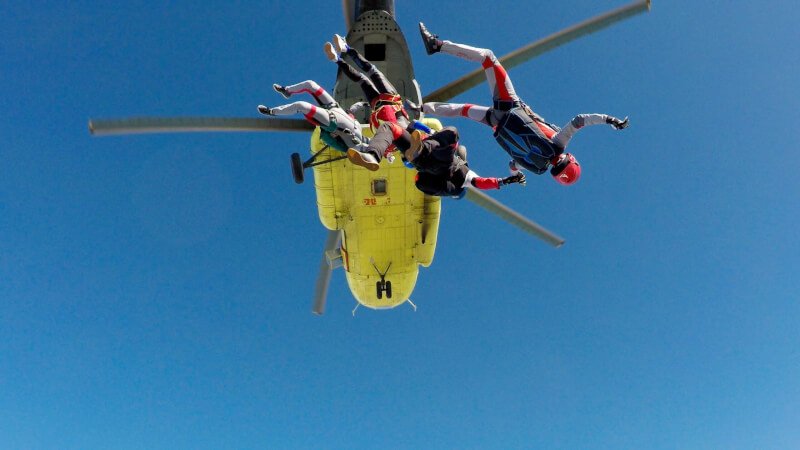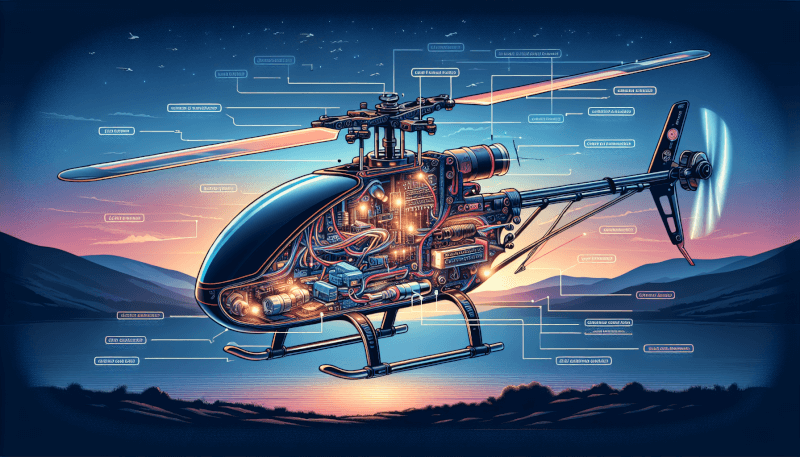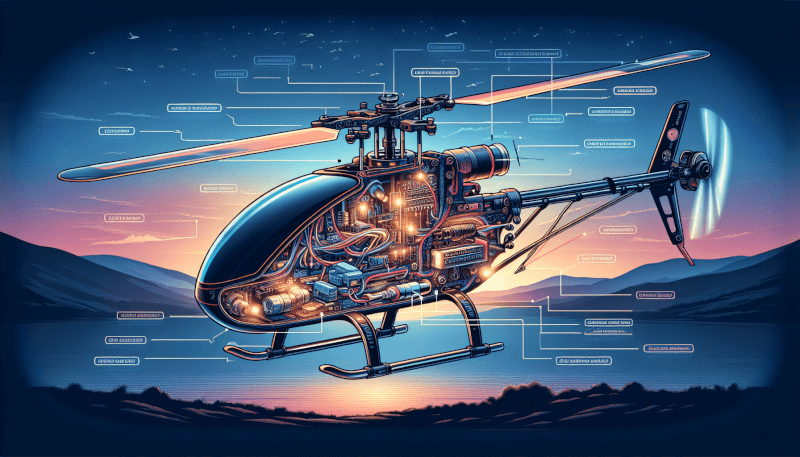RC helicopters are exciting and fun to fly, but we all know the frustration that comes with electrical failures and malfunctions. However, fear not! In this article, you will discover the best ways to prevent these issues and ensure that your RC heli adventures are uninterrupted and enjoyable. From proper maintenance to choosing the right components, we’ve got you covered. So, grab your favorite RC heli and let’s explore the world of prevention together!
Regular Maintenance
Regular maintenance is crucial to ensure the optimal performance and longevity of your RC heli. By following a few simple steps, you can prevent electrical failures and malfunctions.
Check the Wiring Connections
One of the most important tasks during regular maintenance is to carefully inspect all the wiring connections. Over time, vibrations and movements during flights can lead to loose or disconnected wires. A loose connection can cause power loss or short circuits, so it’s essential to secure all the connections properly. Check each wire and connector for any signs of damage or wear and tighten any loose connections.
Inspect the Batteries
Your RC heli’s batteries are vital for its operation, so inspecting them regularly is crucial. Check for any signs of physical damage, swelling, or leakage. If you notice any of these issues, replace the batteries immediately. Additionally, ensure that the battery terminals are clean and free from corrosion. Cleaning them with a soft cloth and some alcohol can help maintain good conductivity.
Clean the Electrical Components
Cleaning the electrical components of your RC heli is another important maintenance task. Over time, dust, dirt, and debris can accumulate in various areas, affecting the performance of your heli. Use a soft brush or compressed air to gently remove any dirt from the motor, speed controller (ESC), and other electronic components. Be careful not to damage any fragile parts while cleaning.
Proper Wiring Practices
Using proper wiring practices is essential to prevent electrical failures and ensure optimal performance. By following a few guidelines, you can avoid potential issues caused by poor wiring.
Use High-Quality Wires
Investing in high-quality wires is key to maintaining the reliability of your RC heli’s electrical system. Cheap or low-quality wires are more likely to break or come loose, leading to electrical failures. Look for wires that are specifically designed for RC helis, as they are often more durable and have good conductivity.
Secure and Label the Wires
Properly securing and labeling the wires not only makes your RC heli look clean and organized but also helps prevent wiring-related issues. Use zip ties or cable clips to secure the wires in place, ensuring they are not dangling or rubbing against other components. Additionally, label each wire with its corresponding function to avoid confusion during maintenance or repairs.
Avoid Overloading the System
It’s important to understand the limitations of your RC heli’s electrical system and avoid overloading it. Adding too many accessories or operating your heli with oversized components can put excessive strain on the system, leading to overheating and potential electrical failures. Always follow the manufacturer’s recommendations regarding the maximum current and load capacity of your heli’s components.

Battery Care
Proper care and maintenance of your RC heli’s batteries are crucial for their performance and lifespan. By following a few simple steps, you can ensure that your batteries remain in good condition and avoid potential electrical issues.
Charge the Batteries Properly
Charging your RC heli’s batteries properly is essential for their longevity and performance. Use a charger specifically designed for your batteries and follow the manufacturer’s instructions carefully. Avoid overcharging the batteries, as it can lead to overheating and reduce their lifespan. Similarly, don’t discharge the batteries below the recommended voltage, as it can cause irreversible damage.
Store the Batteries Safely
When not in use, it’s important to store your RC heli batteries safely. Avoid storing them in extreme temperatures, as it can negatively impact their performance and lifespan. Ideally, store the batteries in a cool and dry place, away from direct sunlight and sources of heat. Additionally, ensure the batteries are stored in a fireproof container or bag to minimize the risk of fire in case of a malfunction.
Replace Old or Damaged Batteries
Regularly inspect your RC heli’s batteries for signs of damage or wear. If you notice any swelling, leakage, or decreased performance, it’s time to replace the batteries. Continuing to use old or damaged batteries can not only lead to electrical failures but also pose a safety risk. Always prioritize the safety of yourself and others by using only reliable and properly functioning batteries.
Safety Precautions
Ensuring the safety of yourself and others should always be a top priority when operating an RC heli. By following a few safety precautions, you can reduce the risk of accidents and potential electrical issues.
Turn Off the Power when Not in Use
When you’re done flying your RC heli, make sure to turn off the power completely. Leaving the heli’s electrical system on unnecessarily can drain the batteries and increase the risk of electrical malfunctions. Additionally, disconnect the batteries from the helicopter when storing it for an extended period to prevent any potential battery drain or short circuits.
Avoid Water and Moisture Exposure
Water and moisture can cause significant damage to the electrical components of your RC heli. Always avoid flying in rainy or damp conditions, as wet components are prone to short circuits and corrosion. After each flight, make sure to dry off any moisture from the heli and inspect the components for any signs of water damage. It’s also a good practice to use conformal coating on the electronic circuit boards to provide an additional protective layer against moisture.
Use Surge Protectors
Using surge protectors can help safeguard your RC heli’s electrical system against voltage spikes and surges. These devices are designed to absorb excessive electrical energy and protect your heli’s electronics from potential damage. Connecting your heli’s power supply through a surge protector not only adds an extra layer of protection but also provides peace of mind during flights.

Proper Flying Techniques
Your flying technique plays a significant role in preventing electrical failures and prolonging the life of your RC heli. By following these tips, you can minimize stress on the electrical components and ensure a smooth flying experience.
Avoid Extreme and Aggressive Maneuvers
While it can be tempting to perform high-speed, aggressive maneuvers with your RC heli, such actions can put excessive strain on the electrical system. Rapid changes in throttle, abrupt movements, and extreme tricks can cause the motor and speed controller to overheat or lead to sudden voltage drops. Avoiding extreme maneuvers and maintaining smooth and controlled flying will help preserve the heli’s electrical components.
Monitor the Motor Temperature
Keeping an eye on the motor temperature during flights is important to prevent overheating and subsequent electrical failures. Excessive heat can damage the motor windings, speed controller, and other electrical components. If you notice that the motor is getting unusually hot during flights, it’s a sign to reduce the flying time or increase ventilation to prevent damage.
Avoid Overusing the Throttle
Constantly running the motor at maximum throttle for extended periods can put unnecessary strain on the electrical system. Avoid keeping the throttle at its maximum setting for too long, as it can lead to overheating and potential motor or speed controller failure. Allow the motor to cool down periodically during flights by reducing the throttle or hovering at lower speeds.
Avoid Interference
Interference from external sources can disrupt the communication between your RC heli’s transmitter and receiver, leading to loss of control or erratic behavior. To minimize interference-related issues, follow these guidelines:
Choose a Suitable Flying Location
Selecting a suitable flying location is crucial to minimize interference. Avoid areas with significant electrical infrastructure, such as power lines or substations, as they can emit electromagnetic signals that can disrupt the radio frequency communication between your heli and transmitter. Choosing an open, wide field away from potential sources of interference will provide a more stable flying experience.
Keep Away from Power Lines
Flying your RC heli near power lines is not only dangerous but also increases the risk of interference. High-voltage power lines can generate electromagnetic fields that interfere with the radio signals between your heli and transmitter. Always maintain a safe distance from power lines to ensure a reliable connection and safe flying conditions.
Avoid Flying Near Other RC Helis
Flying near other RC helicopters can also cause interference issues. Multiple helicopters operating in close proximity can interfere with each other’s radio signals, leading to loss of control or unexpected behavior. If there are other helis flying in the same area, maintain a safe distance and coordinate with other pilots to avoid potential interference-related accidents.

Use Quality Components
Investing in high-quality components for your RC heli is essential for preventing electrical failures and ensuring a reliable flying experience. By choosing reliable electronic speed controllers (ESCs), motors, transmitters, receivers, and spare parts, you can minimize the risk of malfunctions and maximize the lifespan of your heli.
Invest in Reliable ESCs and Motors
The ESC and motor are the heart of your RC heli’s electrical system. Choosing high-quality ESCs and motors from reputable manufacturers can significantly reduce the chances of failures and malfunctions. Inferior or cheap ESCs and motors are more likely to overheat, provide inconsistent power delivery, or fail prematurely. Always prioritize reliability and performance when selecting these critical components.
Choose High-Quality Transmitters and Receivers
The transmitter and receiver form the link between you and your RC heli. Opting for high-quality transmitters and receivers with good signal range and interference resistance is vital for a smooth and reliable flying experience. Look for transmitters and receivers from reputable brands that offer advanced features and solid reliability.
Opt for Genuine Spare Parts
Using genuine spare parts for repairs and replacements is crucial to maintaining the integrity of your RC heli’s electrical system. Generic or counterfeit parts may not have the same quality standards as genuine parts, increasing the risk of malfunctions or failures. Always purchase spare parts directly from authorized dealers or reputable sources to ensure compatibility and reliability.
Learn from Experienced Pilots
Learning from experienced RC heli pilots can provide valuable insights and help you avoid potential pitfalls. By seeking advice and joining RC heli communities, you can learn from others’ experiences and stay up to date with the latest techniques and best practices.
Join RC Heli Communities
Joining RC heli communities, whether online or local clubs, is a great way to connect with fellow enthusiasts and experienced pilots. These communities often have forums, social media groups, and events where you can ask questions, share knowledge, and learn from others’ experiences. The wisdom and insights gained from these communities can be invaluable in preventing electrical failures and advancing your skills.
Attend Flying Sessions and Events
Attending flying sessions and events organized by RC heli communities provides a fantastic opportunity to witness experienced pilots in action and learn from their expertise. Observing their flying techniques, maintenance routines, and safety measures can provide valuable lessons that you can implement in your own flying and maintenance practices.
Seek Advice from Knowledgeable Pilots
Don’t hesitate to seek advice from knowledgeable pilots when you have questions or concerns regarding your RC heli’s electrical system. Experienced pilots can provide guidance on specific issues, recommend reliable components, or suggest improvements to your flying and maintenance practices. Asking for help is a sign of smart and responsible piloting, as it prevents potential mistakes that can lead to electrical failures or accidents.

Regular Testing and Calibration
Regularly testing and calibrating your RC heli’s components is essential to maintain their optimal performance and reliability. By implementing these steps during your regular maintenance routine, you can identify potential issues early on and prevent electrical failures.
Perform Regular Function Tests
Performing regular function tests on your RC heli helps ensure that all the components are working correctly. Test the motors, speed controllers, servos, and other electrical parts to ensure they respond properly to inputs. Additionally, check the functionality of all flight modes, stability systems, and autopilot features if applicable. Identifying any abnormalities during these tests allows you to take appropriate actions before they develop into larger problems.
Calibrate the ESCs and Gyros
Calibrating the electronic speed controllers (ESCs) and gyros is important for precise control and stabilization of your RC heli. Follow the manufacturer’s instructions to calibrate the ESCs to your transmitter’s throttle settings, ensuring a smooth and responsive power delivery. Similarly, calibrate the gyros and flight controllers to achieve accurate stabilization and level flight. Regular calibration helps maintain reliable performance and stability.
Check and Balance the Blades
Checking the condition of the rotor blades and ensuring proper balance is crucial for the safe and efficient operation of your RC heli. Inspect the blades for any signs of damage, such as cracks, chips, or warping. Damaged blades can cause vibrations and affect the overall flight performance. Balancing the blades using a balancer ensures that they rotate evenly, minimizing stress on the electrical system and enhancing the helicopter’s stability.
Emergency Preparedness
While preventive measures are essential, being prepared for emergencies is equally important when operating an RC heli. By taking a few precautions and having the necessary tools on hand, you can handle unexpected situations effectively.
Carry Spare Batteries and Fuses
Having spare batteries and fuses readily available is crucial in case of sudden power loss or electrical failures. Pack extra fully charged batteries whenever you go out flying to extend your flight time or have a backup in case the primary batteries fail. Additionally, keep spare fuses that match the specifications of your heli’s electronic components. Having these essentials on hand can save you from unexpected interruptions during your flying sessions.
Learn Emergency Landing Techniques
Being familiar with emergency landing techniques is an important skill for every RC heli pilot. In case of power loss or other critical issues, knowing how to perform a controlled emergency landing can help prevent additional damage to your heli and minimize the risks posed by unexpected situations. Practice emergency landings regularly in a safe and controlled environment to hone your skills.
Have a Fire Extinguisher Nearby
Accidents do happen, and in the unlikely event of a fire, having a fire extinguisher nearby can make all the difference. Invest in a portable fire extinguisher suitable for electrical fires and keep it within easy reach during your flying sessions. Familiarize yourself with its proper usage and ensure it is regularly inspected and maintained.
In conclusion, regular maintenance, adherence to proper wiring practices, battery care, safety precautions, proper flying techniques, interference avoidance, use of quality components, learning from experienced pilots, regular testing and calibration, and emergency preparedness are all vital aspects of preventing RC heli electrical failures and malfunctions. By following these guidelines and best practices, you can enjoy a safe and trouble-free flying experience with your RC heli. Remember, taking care of your electrical system not only ensures your heli’s longevity but also enhances your own enjoyment of this thrilling hobby.



